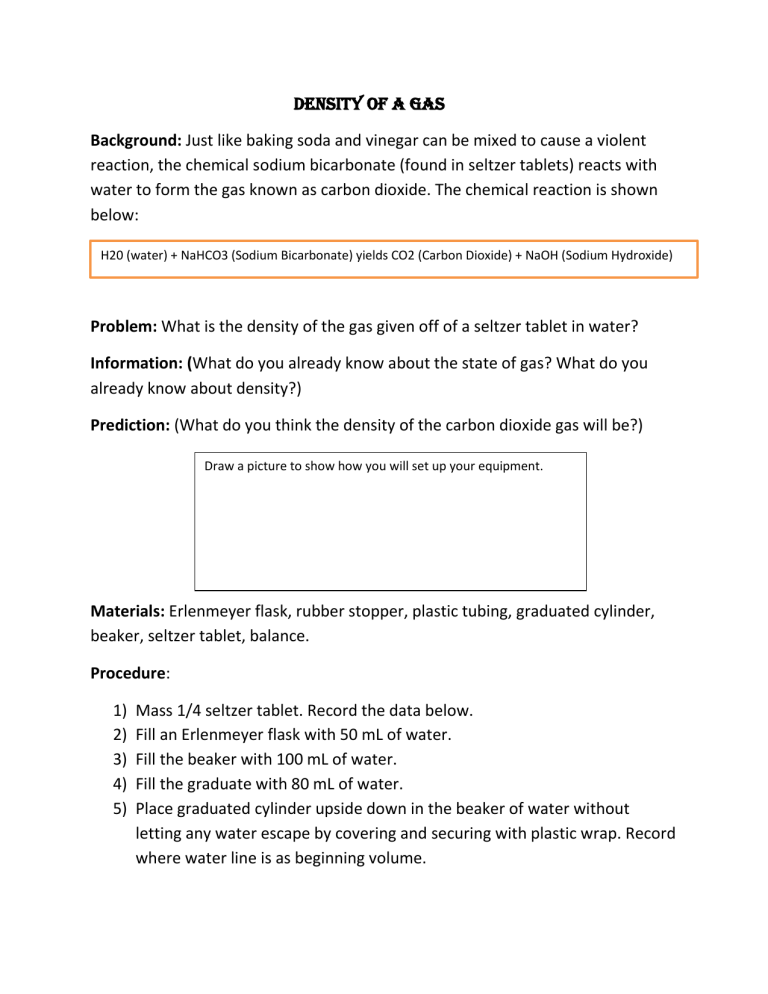Density of a Gas Background

Density of a Gas
Background: Just like baking soda and vinegar can be mixed to cause a violent reaction, the chemical sodium bicarbonate (found in seltzer tablets) reacts with water to form the gas known as carbon dioxide. The chemical reaction is shown below:
H20 (water) + NaHCO3 (Sodium Bicarbonate) yields CO2 (Carbon Dioxide) + NaOH (Sodium Hydroxide)
Problem: What is the density of the gas given off of a seltzer tablet in water?
Information: (What do you already know about the state of gas? What do you already know about density?)
Prediction: (What do you think the density of the carbon dioxide gas will be?)
Draw a picture to show how you will set up your equipment.
Materials: Erlenmeyer flask, rubber stopper, plastic tubing, graduated cylinder, beaker, seltzer tablet, balance.
Procedure:
1) Mass 1/4 seltzer tablet. Record the data below.
2) Fill an Erlenmeyer flask with 50 mL of water.
3) Fill the beaker with 100 mL of water.
4) Fill the graduate with 80 mL of water.
5) Place graduated cylinder upside down in the beaker of water without letting any water escape by covering and securing with plastic wrap. Record where water line is as beginning volume.
6) Attach one end of the tubing to the rubber stopper and carefully insert the other end into the graduated cylinder. If air gets into the cylinder, start over again.
7) Drop the seltzer tablet into the Erlenmeyer flask and quickly put on the stopper.
8) Wait for bubbles to stop without disturbing the flask.
9) Record the new water volume from the graduated cylinder and calculate the difference.
10) Calculate the density of the trapped gas in the graduated cylinder.
Data:
Beginning mass of seltzer tablet in grams
Volume of gas in mL
Density of gas in g/mL
g
mL
g/mL
Analysis: (Write in complete sentences.)
1.
Why must you find the mass of the seltzer tablet before placing it in the water?
2.
Describe what you observed when the seltzer tablet touched the water.
3.
The correct value for the density of carbon dioxide is 0.002g/mL. The density of air is about 0.0013 g/mL. If we let this gas escape, would it rise or sink?
4.
What are some reasons that might explain why our calculation of the density of carbon dioxide was not exactly correct?
5.
Predict what would happen if you increased the size of the seltzer tablet.
Conclusion: (What did you learn from this experiment? How is the density of a gas different from the density of a solid or a liquid? How is it similar?)
Honors: Matter cannot be created nor destroyed. What can you infer happened to the seltzer tablet?











